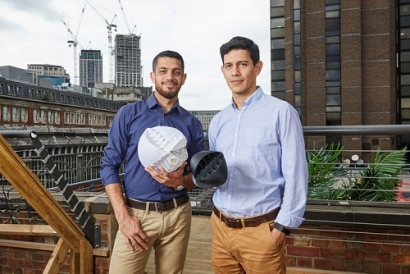
Traditional wind turbines only capture wind travelling in one direction, but are very inefficient in cities where the wind is unpredictable and multi-directional. When wind blows through cities it becomes trapped between buildings, is dragged down to the street and is pushed up into the sky. This catapults wind into chaos, which renders conventional turbines unusable. Using a simple geometric shape, O-Wind Turbine is designed to utilize this powerful untapped resource, generating energy even on the windiest of days.
Orellana first became interested in the challenge of multidirectional wind after studying NASA’s Mars Tumbleweed rover. Six feet in diameter, this inflatable ball was designed to autonomously bounce and roll like tumbleweed, across Mars’ surface to measure atmospheric conditions and geographical location. Like conventional wind turbines, it was powered by unidirectional wind blows which severely impaired the rover’s mobility when faced with obstructions, often throwing it off course and resulting, ultimately, in the failure of the project.
By exploring the limitations of the Tumbleweed, Orellana's three-dimensional wind turbine technology was born. He and fellow student Noorani soon identified how cities could use this technology to harness energy to produce electricity.
The O-Wind Turbine is a 25cm sphere with geometric vents; it sits on a fixed axis and spins when wind hits it from any direction. When wind energy turns the device, gears drive a generator which converts the power of the wind into electricity. This can either be used as a direct source of power, or it can be fed into the electricity grid. Orellana and Noorani aim for O-Wind Turbine to be installed to large structures such as the side of a building, or balcony, where wind speeds are at their highest.
Orellana said, “We hope that O-Wind Turbine will improve the usability and affordability of turbines for people across the world. Cities are windy places but we are currently not harnessing this resource. Our belief is that making it easier to generate green energy, people will be encouraged to play a bigger role in conserving our planet.”
According to the designers, the technology can be used for developing on-grid and off-grid alternatives for the urban market as well as for motor homes, boats and other stand-alone applications at different sizes.
“One particularly interesting possible application is wave energy generation, as under the waves it is also a chaotic situation with water flowing in every direction,” said Orellana.

